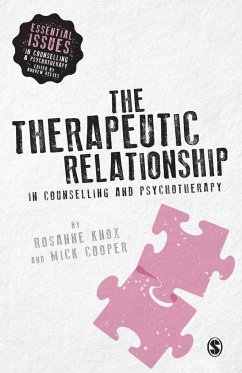What is a therapeutic alliance? How do I create a bond? What might lead to the alliance breaking down? What do I do when the relationship feels stuck?
These are just some of the questions addressed in this important new book for trainee and qualified therapists wanting to understand, engage in and make the most of the therapeutic relationship.
Taking you through each stage of the therapeutic process, from initial boundary setting to effective endings, the book considers a number of different settings and client groups such as working in an online environment and with children and young people. Structured around Frequently Asked Questions , an accessible and engaging narrative guides you though the skills and considerations for an effective therapeutic relationship, as well as the potential challenges it might face.
Bringing to the forefront the mutuality of the relationship and the client as a proactive agent, this bookwill equip you with the knowledge and skills needed to develop trusting and productive relationships with your clients.
These are just some of the questions addressed in this important new book for trainee and qualified therapists wanting to understand, engage in and make the most of the therapeutic relationship.
Taking you through each stage of the therapeutic process, from initial boundary setting to effective endings, the book considers a number of different settings and client groups such as working in an online environment and with children and young people. Structured around Frequently Asked Questions , an accessible and engaging narrative guides you though the skills and considerations for an effective therapeutic relationship, as well as the potential challenges it might face.
Bringing to the forefront the mutuality of the relationship and the client as a proactive agent, this bookwill equip you with the knowledge and skills needed to develop trusting and productive relationships with your clients.
The book explores different aspects of the therapeutic relationship in a very clear and accessible style which will be helpful to trainee and newly qualified therapists working from a range of approaches. Part of the authors stated aims is to address some of the most commonly asked questions around the therapeutic relationship and it was interesting for me to note at the start of a new academic year just how many of these questions were being explored during skills training, theoretical discussions and group supervision. Each chapter is supported with helpful examples from practice as well as research evidence and I particularly liked the way the reader is invited to consider the discussion further through personal reflection and the ideas for research sections. I appreciated the inclusion of dedicated chapters for working with children and young people and telephone and online counselling.
Lucy Machin
Lucy Machin

